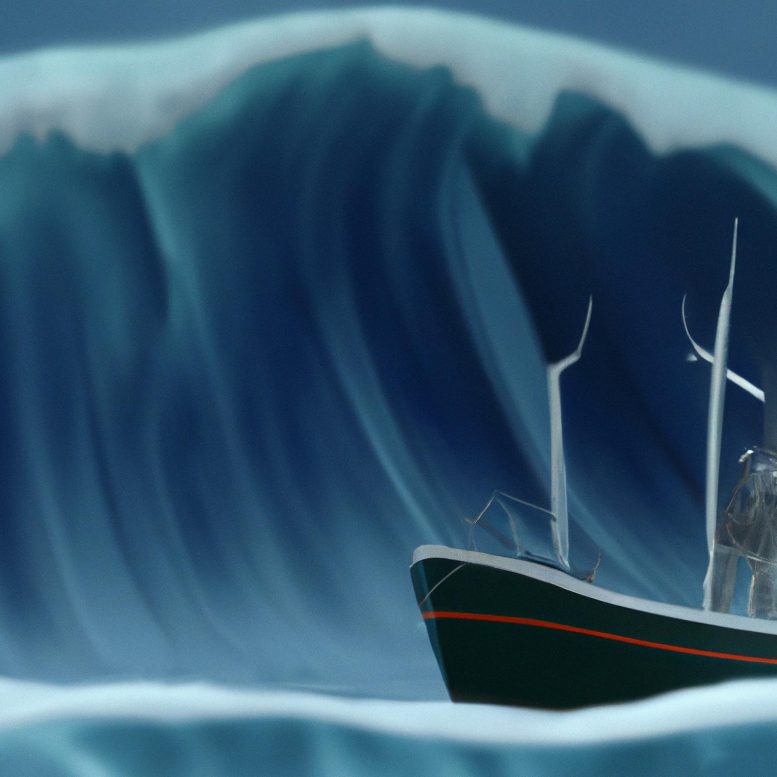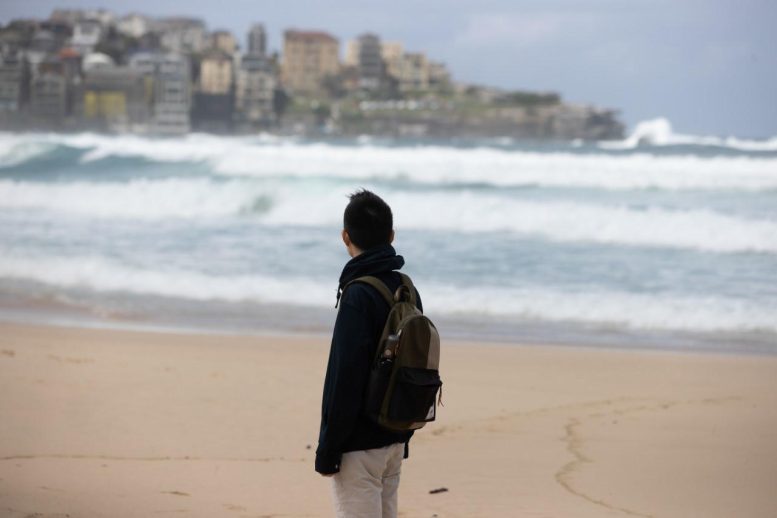
Extreme waves can be generated when waves cross.
A study published in Physical Review Letters by researchers from the University of Sydney and Tokyo University has found that “rogue” ocean waves, also known as extreme or giant waves, may be more common in multi-directional wave patterns than previously thought. These waves, which can damage marine infrastructure, alter coastlines, and pose a threat to human life, are known for their sudden and seemingly random appearance.

These enormous “rogue” swells have long captured the imagination. Although mathematical modelling has helped scientists and engineers hypothesise different causes, since the 1980’s it was thought they were caused by either wave overlap (the superposition principle) or a mechanism which triggers a rogue wave (modulation instability) in one-directional wave systems. In multi-directional systems, known as crossing wave formations or crossing seas, modulation instability was believed to be inactive, rendering extreme waves rare or impossible in these conditions.
To recreate the sea’s complex conditions, researchers conducted experimental demonstrations in a 30-metre-long wave tank located in the University’s School of Civil Engineering.
A mechanical wave generator was employed to create multi-directional waves on the water’s surface, ultimately resulting in unstable rogue “breathers” – waves that suddenly grow and disappear without any disturbance to the surrounding water.

“What our physical demonstration has shown us is that multi-directional systems can also rise to extreme waves from modulation instability in the form of breathers even when another wave system is at play,” said Adjunct Professor of Civil Engineering Amin Chabchoub.
“Until now, this had not been demonstrated,” said lead researcher and PhD student Yuchen He, who is due to complete his PhD at the end of the year.
“The scientific wave community believed that these rogue waves could only be generated in one-directional wave systems – instead thinking that multi-directional wave formations might cancel out these crucial mechanisms.”

The experimental demonstration showed that crossing water waves, which frontally collide with a crossing angle of 180° and cause ‘standing waves’, also allow breather waves to rise.
Caused most commonly during storms, the researchers caution that extreme waves may pose an increasing risk in the wake of climate change.
“If you’re in a boat and get hit by a 25 to 30-meter wave, it’ll most likely be ‘game over’. Unfortunately, because of climate change, in the future we will see an increase in storm intensities, with more frequent cases of extreme waves,” said Professor Chabchoub.

Mr. He said: “Ultimately, the more we unlock the mystery that surrounds how rogue waves appear from flat, calm, or complex seas, we’re creating a better understanding of when and where these giants of the sea are likely to appear. Such findings are also crucial in developing a reliable forecast tool in offshore, but also coastal areas. Ultimately, this will benefit maritime navigation, and on and offshore coastal operations.”
Reference: “Experimental Evidence of Nonlinear Focusing in Standing Water Waves” by Yuchen He, Alexey Slunyaev, Nobuhito Mori and Amin Chabchoub, 28 September 2022, Physical Review Letters.
DOI: 10.1103/PhysRevLett.129.144502
The study was funded by the RFBR and the Laboratory of Dynamical Systems and Applications NRU HSE. The researchers have no conflicts of interest to declare.
4 Comments
Disappointed with the sensationalist even juvenile approach of this article…. It may be that your intended audience is the couch-potato housewife…. If you want to keep my readership or that of any academic engineer or even seaman you should edit from a different perspective…..
Please do not tell your readership how to think. Just present the facts. Have some discipline when tempted to use a succession of superlatives….
And you lost me at “game over”….
Ocean going Ships, yachts, tugs, workboats, are all designed to known levels of seaworthiness. There are procedures even for capsize, and freefall lifeboats….
I’ll say it again, You lost me.
~ Regards
“… because of climate change, in the future we will see an increase in storm intensities, …”
The above is an assertion without substantiation. It is generally accepted that the Arctic is warming more rapidly than the rest of the globe. With a decreased thermal gradient, storms will probably be less severe. While, theoretically, hurricanes can be stronger in warmer water, there isn’t conclusive empirical evidence to support the conjecture. 2022 was predicted to be an above average Atlantic hurricane season and the prediction was wrong.
Since the Earth is in the Holocene interglacial, the Earth is warming. It is sad to see the non science term “climate change” thrown into the article abd then tied to an unsubstantiated claim that storms will worsen without regard that both change and worsen are relative terms that only have meaning when what is compared is defined.
The last 25 years have had fewer landfall hurricanes in N. America and fewer annual N American tornadoes compared to the prior 25 years.
To just say “change ” without parameters is not science.
AI art for the cover pic! Not the best-looking fake boat.